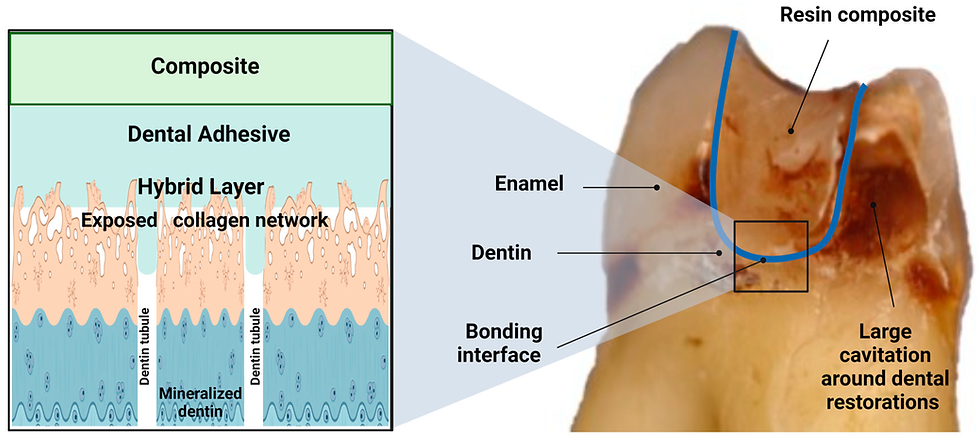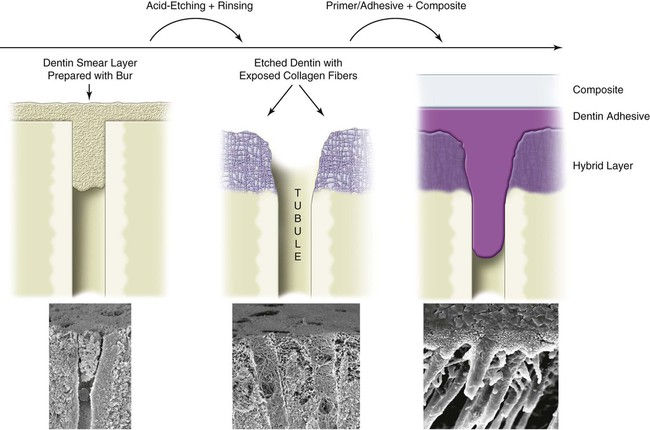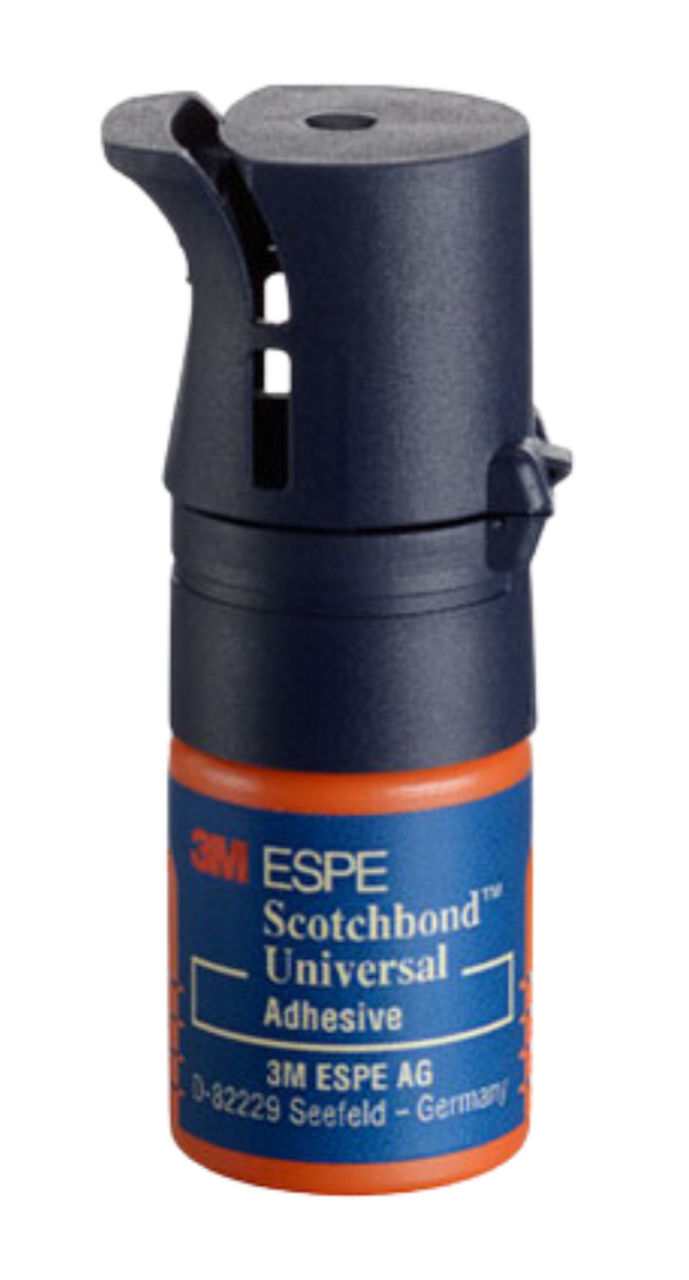Etching, Self-Etching, and Adhesives: Making Sense of Modern Bonding Protocols
- naytoghlo
- Sep 6, 2025
- 4 min read

Introduction
In contemporary adhesive dentistry, few topics generate as much debate as the question: Do we still need to selectively etch enamel when using self-etch adhesives?
For decades, the standard was clear — phosphoric acid etching of enamel (and sometimes dentin) was the gold standard. But the rise of self-etch and universal adhesives has changed the conversation, raising new clinical and research questions.

Enamel Surface Morphology: Why Etching Works

High-magnification imaging shows exactly why phosphoric acid etching improves enamel bonding.
Cerci et al. used AFM and SEM to compare (a) pumiced enamel and (b) enamel etched with 35% phosphoric acid for 15 s vs 30 s. Pumicing produced only minor irregularities, while etching created a pronounced honeycomb/Type-I etch pattern with deeper prism cores—especially at 30 s—enhancing micromechanical retention for adhesives.
Source: Cerci B, Roman L, Filho O, Camargo E, Tanaka O. EJGD 2012;1(3):187–191. doi:10.4103/2278-9626.105385.
A recent publication in Dental Materials by Rifane, Hirata, Araújo-Neto, Ottoboni, Feitosa, and Giannini (2024) brings this discussion into sharper focus. Their study examined the effect of phosphoric acid etching and aluminum oxide air abrasion on enamel topography and the adhesion of resin composites. The results shed light on when etching is still beneficial, and when other surface treatments may suffice.

What the Research Found
The study compared six enamel conditions:
Intact enamel + phosphoric acid etch
Intact enamel + self-etch adhesive
Abraded enamel + phosphoric acid etch
Abraded enamel + self-etch adhesive
Intact enamel + aluminum oxide blasting (self-etch mode)
Intact enamel + blasting + phosphoric acid (self-etch mode)
Key findings:
Surface roughening matters. Enamel that was abraded (with burs or blasting) bonded significantly better than smooth, untouched enamel.
Phosphoric acid improves etch-and-rinse outcomes — especially on abraded enamel.
In self-etch mode, aluminum oxide blasting improved results so much that selective phosphoric acid etching became less critical.
👉 Translation: If you roughen enamel first, you might not need to selectively etch when using a self-etch adhesive like Clearfil SE Bond.
What Ronaldo Hirata Highlighted
Clinician-researcher Ronaldo Hirata summarized the takeaway in his post:
“Is selective conditioning of enamel for self-etching adhesives still necessary? This work shows that maybe not, at least for the Clearfil SE Bond adhesive tested with previously used aluminum oxide jetting.”
This reflects a shift: enamel conditioning doesn’t always have to mean phosphoric acid, as long as the surface has been mechanically altered.
Clinical Reality vs Research Ideal
While these findings are valuable, clinical dentistry isn’t performed under laboratory control. In everyday practice:
It is very difficult to confine phosphoric acid only to enamel margins without touching dentin.
Most clinicians default to total-etch, because it’s safer and more predictable in a busy operatory.
Not every practice has routine access to an aluminum oxide air abrasion unit.
Thus, while research may show that “selective etch isn’t always necessary,” clinical judgment still favors phosphoric acid in many scenarios.
Adhesive Systems Compared

1. OptiBond Solo Plus (OptiBond S, Kerr)
Type: 5th-generation, total-etch only.
Protocol: Phosphoric acid on enamel and dentin → rinse → apply adhesive.
Strengths: Excellent enamel bonding, time-tested.
Limitations: Technique sensitive on dentin (must avoid overdrying).

2. Scotchbond Universal (3M, orange bottle)
Type: Universal adhesive (etch-and-rinse, selective-etch, or self-etch).
Best performance: Phosphoric acid on enamel margins, adhesive applied in total-etch mode.
Flexibility: Can be used in self-etch mode when dentin sensitivity is a concern.

3. Clearfil SE Bond (Kuraray Noritake)
Type: 2-step self-etch.
Specialty: Gold standard among self-etch adhesives; reliable even without phosphoric acid.
Boost: When enamel is roughened (e.g., with Al₂O₃ blasting), phosphoric acid may not be necessary.
Practical Chairside Guidelines
If using OptiBond S (total-etch only): Always apply phosphoric acid to both enamel and dentin.
If using Scotchbond Universal:
Total-etch is the most predictable and gives the strongest enamel bond.
Self-etch can be considered in deep dentin to reduce post-op sensitivity.
If using Clearfil SE Bond:
On intact enamel, consider selective etching unless you’ve air-abraded.
On abraded enamel (e.g., after a bur or Al₂O₃ blasting), self-etch may be enough.
Clinical Pearls
Enamel loves phosphoric acid. The micromechanical etching pattern is unmatched.
Dentin is more fragile. Over-etching or overdrying can compromise bond strength.
Mechanical prep helps. Roughening enamel (with a bur or blasting) enhances adhesion regardless of the adhesive system.
Universal adhesives aren’t magic. They still perform best with enamel etching, despite marketing claims.
Individualize your protocol. Choose based on tooth structure (enamel vs dentin dominance), adhesive type, and clinical situation.
My Preference: Following Dr. Matt Nejad’s Lead
While I adapt to what’s available in my current clinical setting — sometimes OptiBond S, sometimes Scotchbond Universal — if it were up to me, I would choose Clearfil SE Protect as my primary adhesive.

Dr. Matt Nejad, a leader in biomimetic dentistry, recommends Clearfil SE Protect because it goes a step further than Clearfil SE Bond:
Antibacterial action (MDPB monomer): Kills residual bacteria at the bonding interface, reducing the risk of recurrent decay.
Fluoride release with “Super Dentin” effect: Creates an acid-base resistant zone that reinforces dentin against future caries and breakdown.
Low post-op sensitivity: Multiple clinical trials report minimal to no sensitivity, even in deep dentin.
Proven long-term durability: Five-year clinical studies show stable retention and bond strength.
In other words, Clearfil SE Protect combines the handling and reliability of Clearfil SE Bond with added biological benefits that fit perfectly within a biomimetic philosophy: preserve tooth structure, protect against bacterial insult, and create a stronger, more durable adhesive interface.
This is why Dr. Nejad and many biomimetic clinicians favor it — and why it’s the system I would choose, whenever I have the opportunity.
Conclusion
Research continues to refine our understanding of adhesion. The latest evidence suggests that when enamel is mechanically roughened, self-etch adhesives like Clearfil SE Bond can perform well without additional selective etching. However, in everyday practice, phosphoric acid etching — whether in total-etch or selective-etch form — remains the most predictable way to secure long-term enamel bonds.
At the same time, adhesives like Clearfil SE Protect remind us that dentistry is not just about immediate bond strength — it’s about building restorations that protect teeth biologically and mechanically for years to come. That’s why, if given the choice, I would follow Dr. Nejad’s lead and make Clearfil SE Protect my go-to adhesive.



Comments